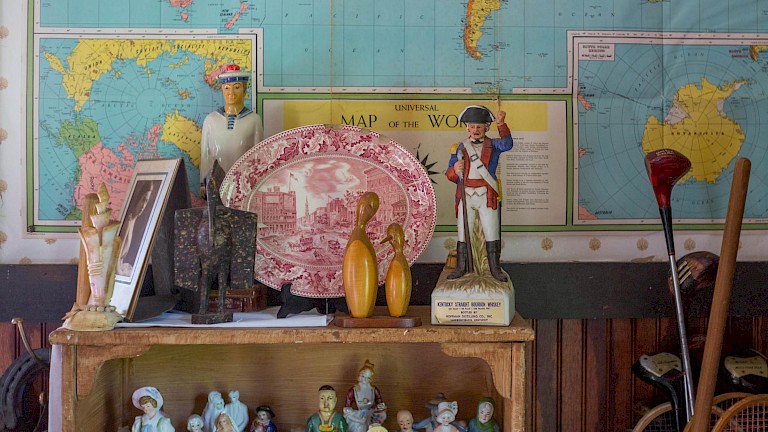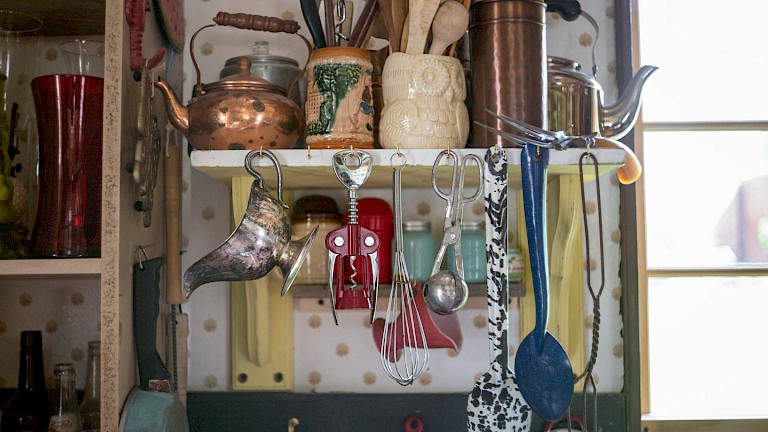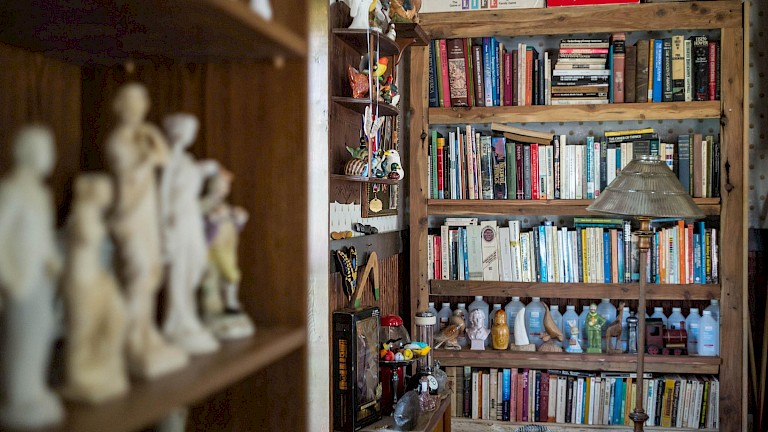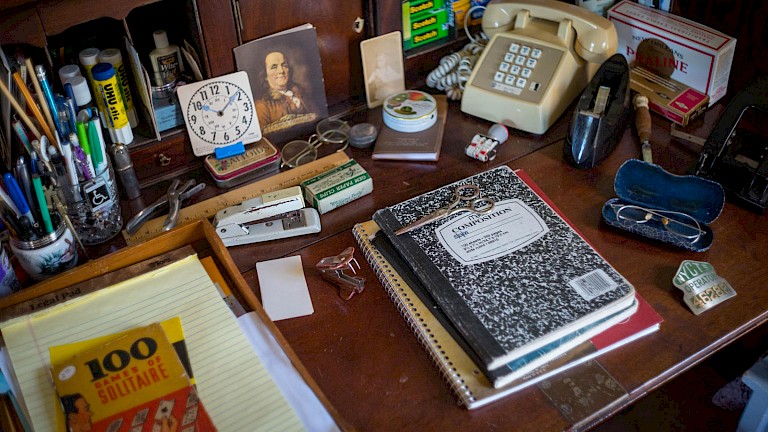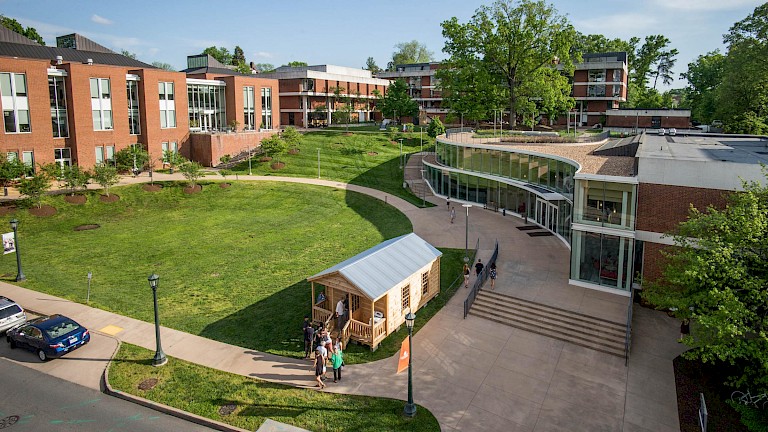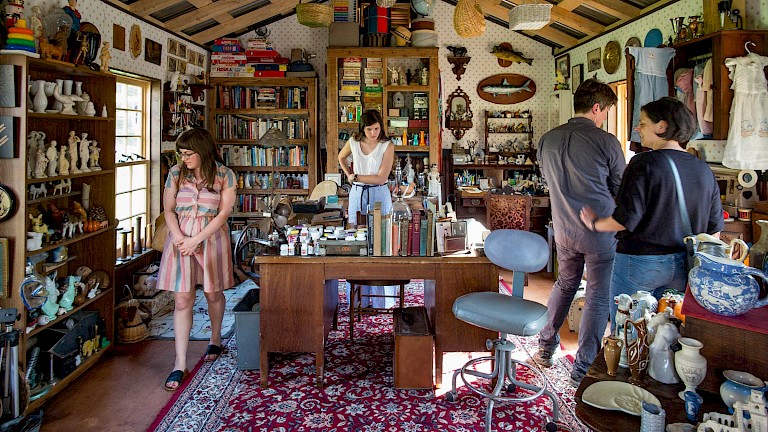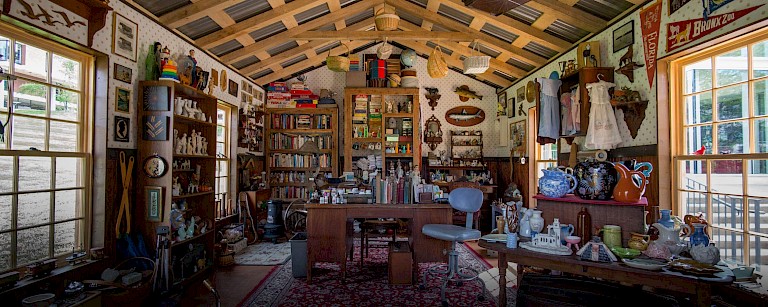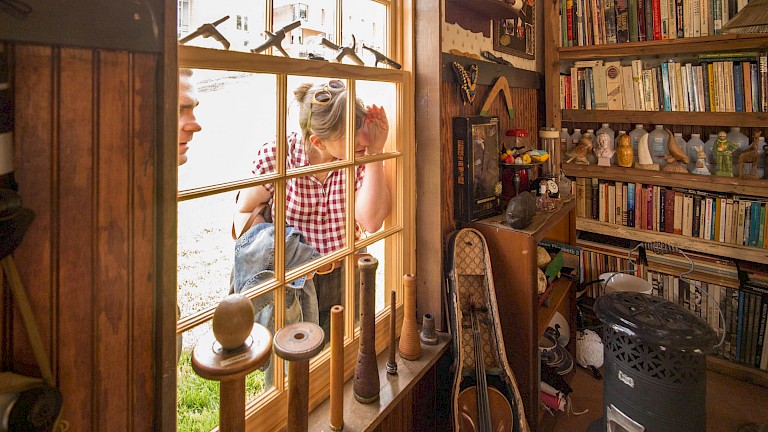



The Virginia Curiosity Shop is a large-scale temporary public artwork sited on the Arts Grounds of the University of Virginia in Charlottesville. To understand the context of the piece and how it proposes a dialogue with the city’s public is important to recognize that the Charlottesville-Albemarle region plays an important role in US history; the city of Charlottesville present as a city with a special dedication to the preservation of the region’s distinct traditions. The city's rich history has become an inseparable part of the area’s unique culture and why people visit the city. Once home to three founders who would become U.S. presidents, the area offers a unique platform to engage in the complexity of US history. The city has several national historic landmarks and one of the oldest universities in the country. In that context, the public art exhibit plays were inspired by 16th-century “cabinets of curiosities” – rooms in which members of the upper class would collect and store various geographical, historical, and archaeological artifacts. Appearing in Renaissance Europe, the ‘cabinet of curiosities is an early ancestor of the modern museum. The cabinets also played a fundamental role in the development of modern science—with a particular leaning towards the rare, eclectic, and esoteric artifacts in their collections. The popularity of the cabinet of curiosities faded during the nineteenth century, as official institutions and private collections replaced it.
The Virginia Curiosity Shop consists of a well-crafted, aged vernacular structure –like a house--, a recognizable architecture and type of construction for the area that gives the impression of having been located on the site for decades. The modest building is a small and simple wooden building, with a tin roof, a porch, and small glass windows that resemble countless structures dotting the rural landscape of the state of Virginia, appears as a strange remaining building miraculously untouched by the modern era, visibly contrasting with the modern building of the university in terms of construction and scale. With its diminutive stature, tin roof, multi-paned windows, and weathered gray siding, the building appears humble and amiable. Nothing on the exterior prepares visitors for the visual feast they will encounter when they peer through its low windows and ascend the porch to its viewing vestibule to see the building’s interior. The vision of the interior greeting the public is one of shocking material excess, wonder, and beauty, triggering a series of questions on the audience about the collection, its origins, and meaning. Asking the audience to see past the clutter and into the creative manifestation of the display requires an active imagination on the viewer’s part.
All copyright belongs to Shanghai Academy of Fine Arts, Shanghai University.
